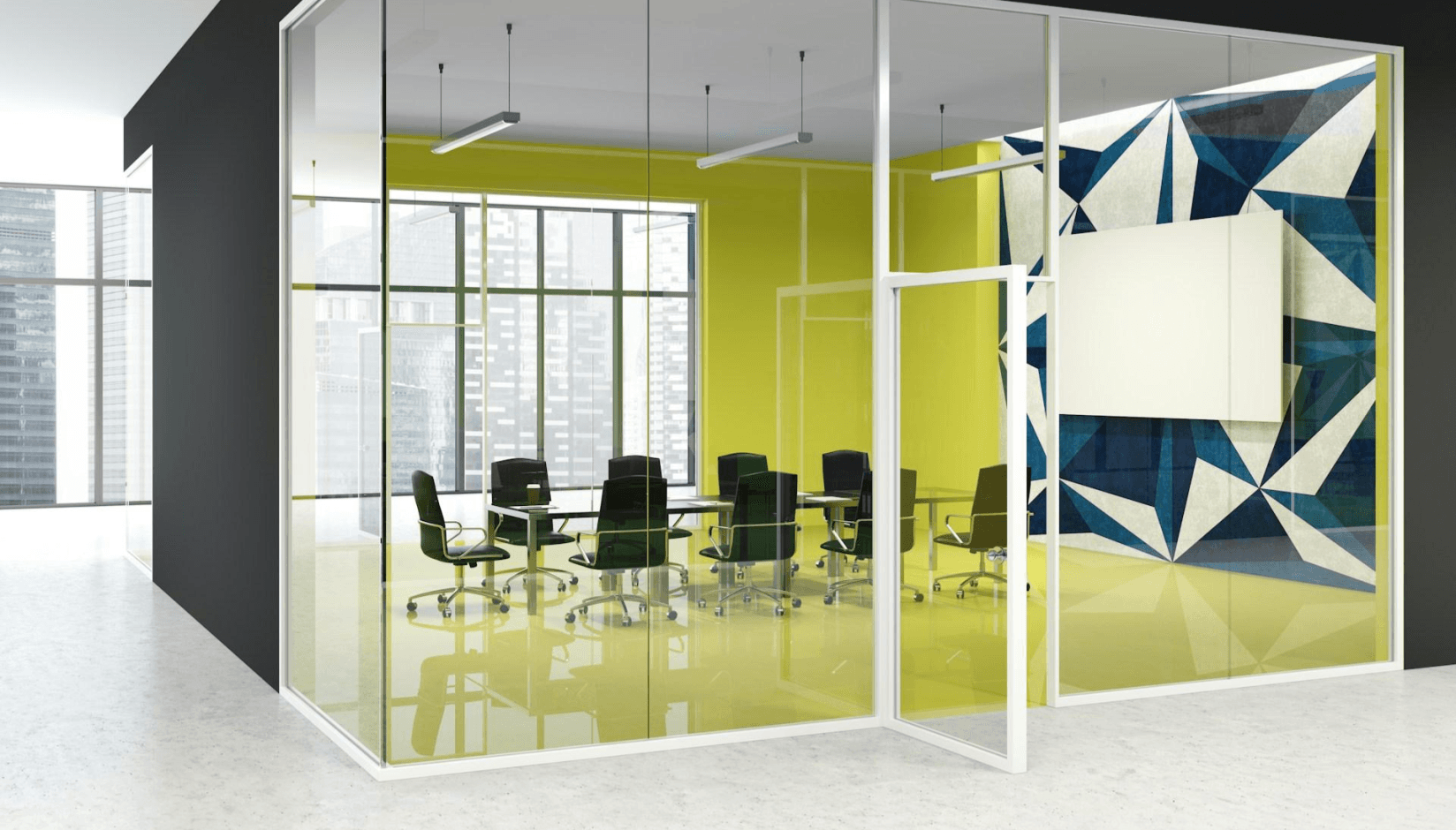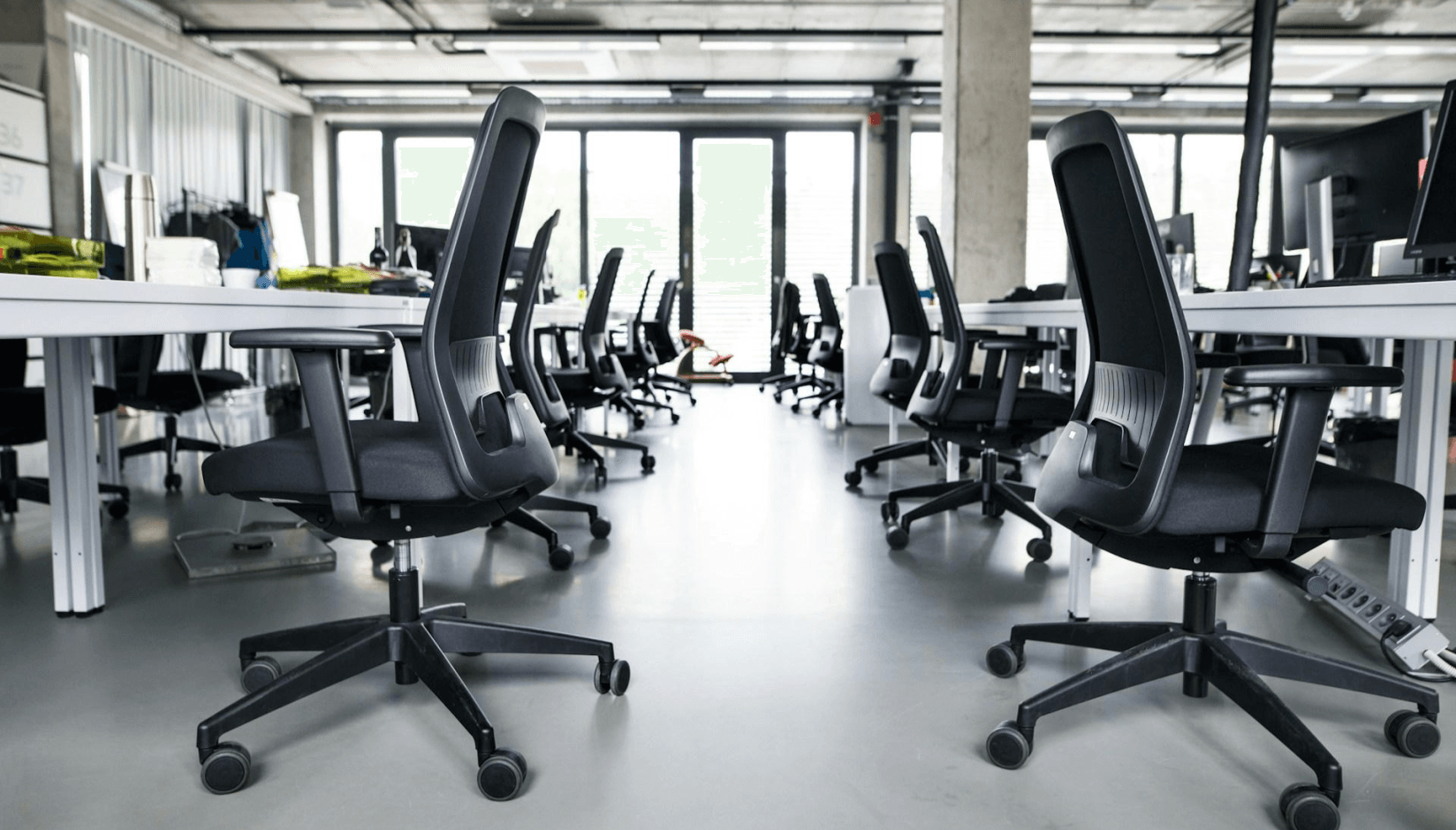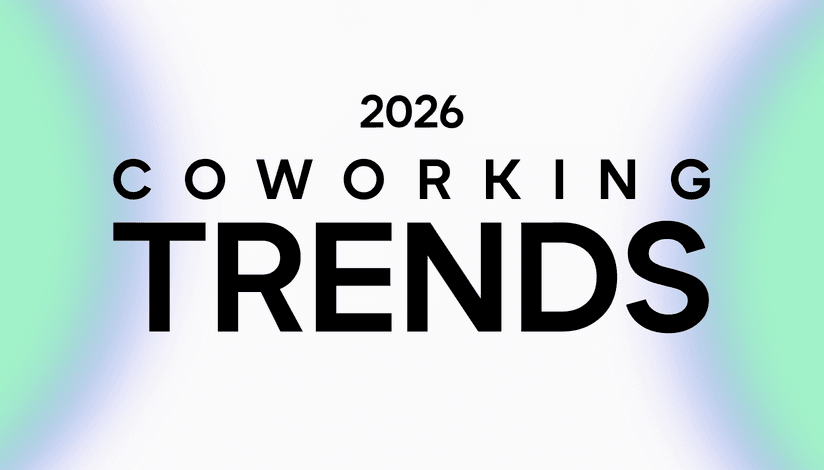Although many companies and individuals have adapted their mindsets to working in hybrid or all-remote settings, it can be difficult for even the most driven entrepreneurs or freelancers to stay focused all the time.
While many might brush off these less-than-productive instances as just having an “off day,” the reality is that the environment we’re in when trying to get work accomplished can play a significant factor. This is especially the case in coworking spaces, where tenants need to make sure they’re maximizing productivity returns on their investment.
According to a recent survey, 84% of coworkers say working in a coworking space makes them more engaged and motivated. However, the important thing to remember is that while working in a coworking space “can” be highly productive, not all shared spaces are formatted with optimal layouts or design choices to support this level of member motivation.
So, how do you ensure you’re creating an optimal environment that creates more tenant motivation and maximizes productivity levels? The secret lies in purposeful design choices that can be successfully made by relying on Feng Shui principles.
What Exactly is Feng Shui and How Does It Apply In Coworking Settings
When hearing the term “Feng Shui,” it might evoke certain images of relaxing day spas or therapy offices. However, the origins of Feng Shui go back thousands of years and are an age-old Chinese practice that's aimed at harmonizing our surroundings.
Central to Feng Shui is the belief that how you place and orient various objects in a design space can directly influence how energy moves in that space. If there is a smooth flow of energy, it can help to encourage an improved sense of balance and well-being.
In the context of coworking spaces, Feng Shui principles can be leveraged to help create an environment that's more conducive to productivity and creative expression. This can be done by changing the placement of furniture, making smarter choices regarding color schemes and lighting, and choosing decor carefully.
The Ultimate Guide to Designing and Utilizing an Effective Coworking Space Layout
The Power of Chi in Coworking Spaces
In Feng Shui, "Chi," also referred to as "life energy," holds significant importance to the practice's supporting principles. It represents a vital force that connects everything on earth and encompasses everything from the air we breathe to our living and working environments.
How Chi flows in our workspaces can significantly impact both the atmosphere itself and the mention and emotional climate created by those working in it. When a workplace has more free-flowing Chi, it can have a profound impact in encouraging more creative and focused mindsets, which is essential when designing a coworking space.
On the other hand, if Chi becomes blocked or stagnant due to a variety of poor Feng Shui practices, it's said to lead to more discomfort, which can translate into "mental fog" or even toxic attitudes. When this happens, you can see a significant decrease in member productivity and even contribute to increased levels of stress among staff and customers.
Understanding the Bagua
Feng Shui also uses the "bagua," which is a map of nine energy centers without a space. Each of these energy centers, referred to as "gua," corresponds to different aspects of life, including your personal health, financial stability, or important relationships. Having an understanding of these energy centers and the associated elements, colors, and shapes that represent them can help you make more purposeful decisions on how they design a coworking space.
How to Use Feng Shui to Create a More Productive Space
Feng Shui may seem like a difficult practice to wrap your head around at first, but its core design concepts are surprisingly easy to integrate into all types of office and coworking settings. Below are some practical ways to infuse these principles to help create a more productive workspace for everyone:
1. Choosing the Right Office Location
Workspace locations, especially in shared environments, can significantly impact the amount of focus and output tenants have when occupying them.

When choosing office locations, one important principle is to look for quieter zones within a coworking environment, away from high-traffic areas that can cause easy distractions. This might mean setting up a dedicated desk in a quiet corner of the room or even using a private booth or working pod to support more focus.
Another thing to consider when choosing working locations is to place desks in locations with a view of the outside. This offers a visual break from day-to-day tasks and can also be a great way to relax the mind, reduce stress, and even spark more creativity.
You should avoid placing desk or office locations near areas prone to noise, such as the entrance, kitchen, or other communal areas. This can impact member concentration and create an imbalance of energy flow.
2. Making Conscientious Decisions Regarding Color Choices
Many operators don't consider that the ambiance and productivity of a shared workspace can be tied to the color choices and materials used in an office. While these choices may be subtle, collectively, they can help shape an environment's energy and mood.

In Feng Shui, each color is associated with one of five elements: wood, fire, earth, metal, and water. Each element is believed to have a unique vibrational energy that can impact the overall "feel" of a space.
Before choosing a color palette for the shared space setting, it's important to consider any personal goals or work habits you're trying to encourage. If members are in a creative field, for example, incorporating more green tones (a Feng Shui symbol of growth and innovation) might help spark more inspiration in teams.
In other settings where highly focused work requires meticulous decision-making, using an earthy tone like brown can represent being grounded and improve confidence and stability.
Outside of just making color choices, the type of furniture and materials in the shared space also hold significance in Feng Shui. Wood, metal, glass, and other supportive materials can incorporate one or more of the five elements and help you optimize energy flow in a space. Wooden desks, for example, incorporate nature, which can help nurture creativity levels, while metal filing cabinets or other structures represent organization and efficiency.
3. Placing Your Furniture Optimally
In Feng Shui, the placement and direction of your furniture can also impact the flow of positive energy. In optimal settings, desks should be placed in the "command position." This positioning refers to having individuals face the door when they're working but not directly in line with it.

The core concept surrounding the command position being the most optimal placement is that it helps to empower individuals, giving them a more pronounced sense of security, knowing that they won't be startled when something approaches them. It also helps to ensure privacy when working in coworking settings.
Another principle when positioning furniture is to avoid having your back facing a window or a larger piece of furniture if possible. This is said to increase feelings of vulnerability and can subconsciously impact focus. If desks need to be placed by a wall, using mirrors can help to provide individuals with reflections of what's behind them while also helping to open up the area.

Discover the keys to the happiness of your coworking space members.
4. Incorporating Natural Elements
Integrating more natural elements into a shared workspace can significantly improve energy flows and create a more inviting atmosphere for everyone.

You can begin this process by introducing more plants into the space, which symbolizes the wood element in Feng Shui. Plants are also great additions to any closed-door spaces as they help to purify the air and can make the environment healthier to work in.
Water features like a small fountain or even artwork depicting nature scenes are another great way to incorporate more natural elements into a coworking space. These features are used to help create a calming effect in spaces.
Bringing natural sunlight or fresh air into the space can also be important. If accessible, open windows to allow a gentle breeze in the room and allow natural light sources. If you're limited in the ability to produce natural sunlight in the workspace, consider using full-spectrum lighting that allows you to closely mimic natural light instead of relying on harsh artificial lighting.
5. Avoiding Clutter and Disorganization
Clutter represents visual and mental chaos and can act as an energetic barrier that can negatively impact productivity levels.
To encourage a more active and productive working atmosphere in your coworking space, it’s important to ensure the space is regularly cleared of unnecessary items. This includes any documents that are not needed, unused office supplies, and any other items that accumulate over time.
Incorporating smart solutions is another way to help maintain a well-organized and inviting workspace. Tools like filing cabinets, shelving, and desk organization can ensure members can keep all of the necessities tucked away in their designated spaces. This not only eliminates visual clutter but also makes working areas much more efficient, with only the required items remaining readily accessible.
Start Getting More Done By Using Feng Shui Principles
Feng Shui has seen a resurgence over the years when applied in office settings. By consciously applying these principles in your coworking space, you can design an atmosphere that is not only enjoyable to be in on a daily basis but also encourages more productivity and efficiency.
Ready to explore creative meeting room design ideas? Check out our article for 30+ inspiring options.
The article was written by Dr. Hannah Yang. Visionary and healthcare entrepreneur by passion, Licensed Psychologist by training, Dr. Hannah Yang loves creating new possibilities in the world of mental health and wellness. Dr. Yang established Balanced Awakening in 2015 as a niche psychotherapy practice for women. As Balanced Awakening flourishes in Chicago, and soon Miami, she also loves to tap into her passion for design and Feng Shui to create fabulous environments for herself, her team, and clients.






